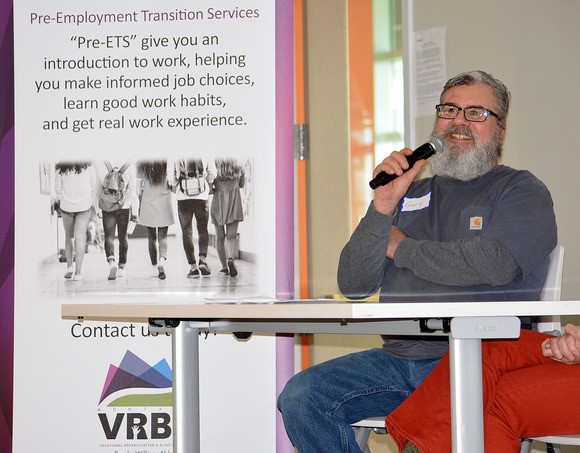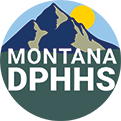FOR IMMEDIATE RELEASE
Date: May 15 2025

Photo caption: Pictured above is business owner Gary Hicks, who participated in a Wednesday, May 14 panel discussion called Disability and Innovation: Entrepreneurs Leading the Way. Hicks owns A1 Mechanic Services in Lincoln, MT.
Contact: Jon Ebelt, Communications Director, DPHHS, (406) 444-0936, (406) 461-3757
jebelt@mt.gov
DPHHS Concludes Successful Disability Employment Summit
MISSOULA - The third annual Disability Employment Summit concluded today in Missoula with employers, entrepreneurs, and advocates in attendance to explore the powerful impacts of equitable hiring and workplace accessibility.
The event was sponsored by the Department of Public Health and Human Services (DPHHS).
“This annual summit continues to be a valuable opportunity for Montana businesses to learn from experts about the benefits of employing individuals with disabilities,” said DPHHS Disability Employment and Transitions Division Administrator Chanda Hermanson. “Montana has a strong and capable workforce, and many individuals are eager to contribute their talents to businesses across the state.”
Industry leaders and experts shared insights on fostering employment opportunities for individuals with disabilities throughout the three-day summit, highlighting strategies that drive innovation, profitability, and workforce development.
The agenda topics included neurodiversity recruitment, mental health in the workplace, service animals in the workplace, available tax credits for hiring individuals with disabilities, wrongful discharge, work-based learning successes, disability workforce development, accessible communications in the workplace, leveraging apprenticeship opportunities and more.
Hermanson said Montana businesses are very supportive of hiring individuals with disabilities.
"This event provides Montana businesses with critical knowledge about the value of hiring individuals with disabilities," Hermanson said. "Employers who welcome workers with disabilities into their workforce see increased revenue, enhanced productivity, and stronger workplace cultures. A well-rounded workforce drives innovation and growth, and businesses that tap into this talented labor pool gain a competitive advantage."
An opening keynote from the Harkin Institute underscored the importance of Competitive Integrated Employment, emphasizing that businesses that foster inclusivity achieve greater levels of innovation, profitability, and long-term market success. Attendees also heard from Eric Clark, M.A., C.R.C., of the Colorado Division of Vocational Rehabilitation (DVR), who shared practical guidance on disability employment strategies.
The summit also featured a session titled, “Unlocking Montana’s Workforce,” led by Nicholas Holom, Senior Economist at the Montana Department of Labor and Industry. Experts, including representatives from Blackfoot Communications and Wear Your Roots, facilitated discussions on self-employment opportunities, accessible communications, and employer engagement.
In her role at DPHHS, Hermanson oversees the Vocational Rehabilitation and Blind Services (VRBS) program. VRBS connects individuals with disabilities with employment opportunities and provides them with the tools they need to be successful.
“Our organization offers businesses a comprehensive suite of services, resources, and strategic solutions to support disability employment,” Hermanson said. “We provide no-cost assistance in sourcing qualified candidates, enhancing employee retention, improving workplace accessibility, and leveraging additional tools that optimize efficiency and reduce costs.”
VRBS counselors work with businesses to find and retain qualified candidates, solve issues related to accessibility and technology, provide consultations on issues such as transportation, and deliver training on disability inclusiveness to empower businesses.
Hermanson said VRBS is here to help businesses who employ or want to employ individuals with disabilities.
“Our mission is to empower Montanans of all abilities with meaningful opportunities to thrive—ensuring they can fully contribute to our state’s community, workforce, and economy,” she said.
There are about 82,000 Montanans with disabilities aged 18-64. This population is split among 35,000 Montanans with disabilities who are not in the labor force and 45,000 who are in the labor force and working. The remaining 1,900 are in the labor force, but unemployed.

